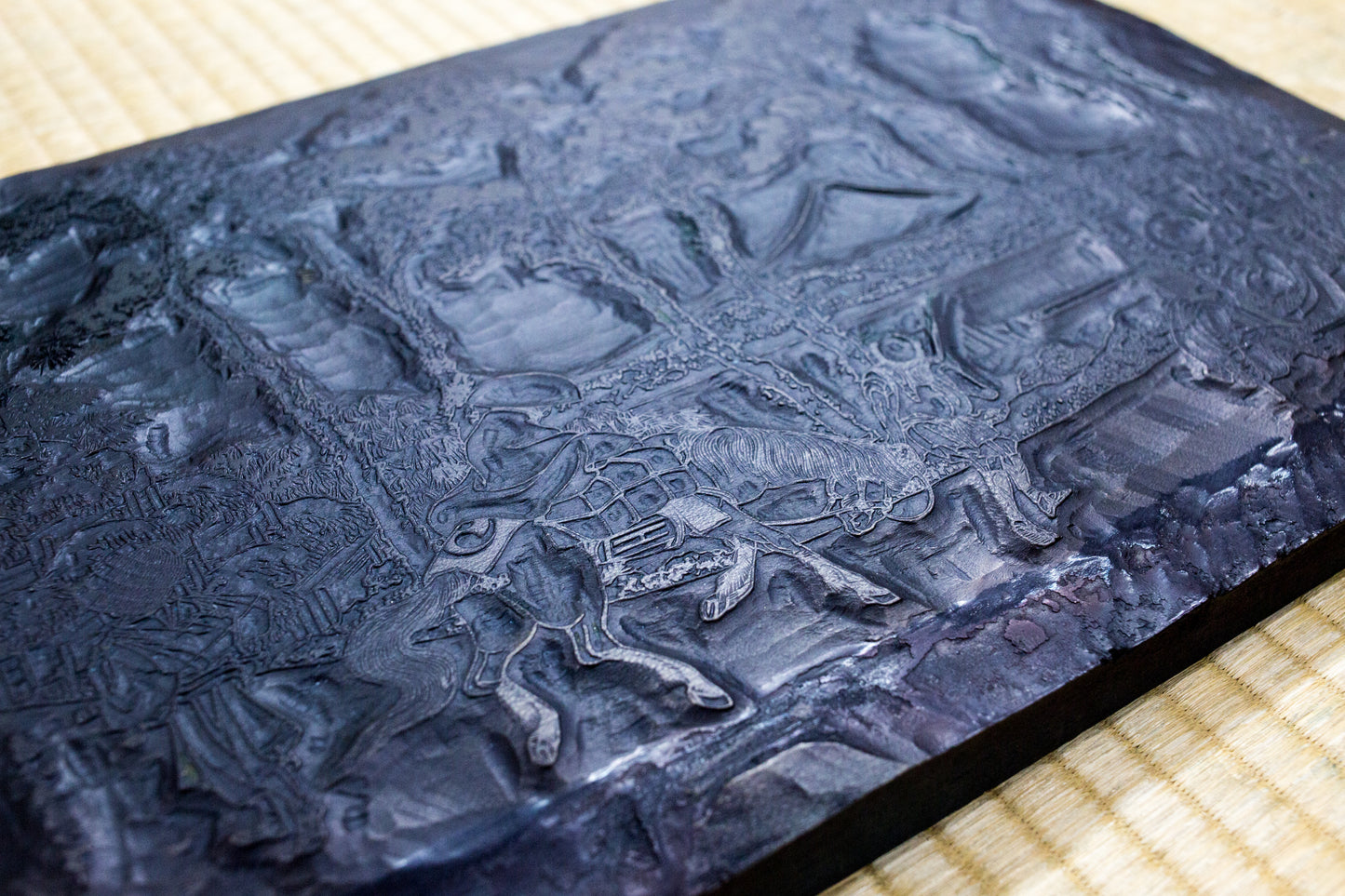Hangoro Sakata III as Fujikawa Mizuemon
Hangoro Sakata III as Fujikawa Mizuemon
Couldn't load pickup availability
Sharaku Toshusai(birth and death dates unknown)
Birth and death dates unknown.
In 1794 (Kansei 6), Sharaku came into sudden prominence, produced more than 140 ukiyo-e paintings during the mere ten months of his activity as an ukiyo-e painter, and then disappeared forever. For his debut work, he used the large, o-ban printing size, and expensive biotitic background printing, which was unusual. Juzaburo Tsutaya, a publisher, enthusiastically promoted Sharaku after Utamaro had left him. Meanwhile, the printing size was getting smaller. One of the major reasons for this was that Sharaku’s way of drawing actors as they were, regardless of their popularity, was not accepted by people of the era. However, each of his portraits is full of energetic impression and gives a positive impact. Because of this, he also received high acclaim from abroad.
Selections of Sharaku Toshusai
Sharaku Toshusai(birth and death dates unknown)
One of the reasons why Sharaku’s works are precious is that so few exist. Unfortunately, his art was recognized abroad before it gained popularity in Japan. While the Japanese were blind to his talent, many of the works ended up abroad and were praised. Some of the works were brought back to Japan as part of the Matsukata Collection in 1943 (Showa 18), which increased the number of his popular works in Japan. These forty works were reissued from the collection. Each of them represents one of Sharaku’s great masterpieces.
Share



















